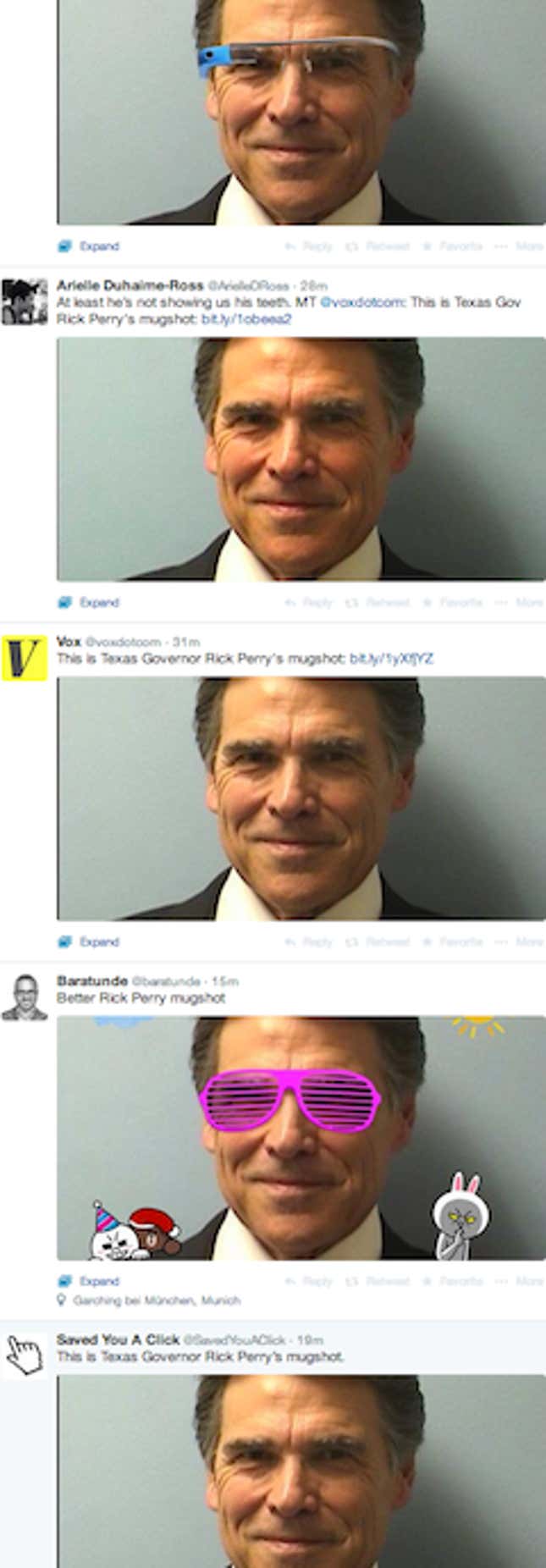
When Twitter was still Twttr, before tweets were even limited to 140 characters, the company’s founders had a crucial decision to make. Jack Dorsey’s original vision was that users could only ever have one status at a time, like an away message. Ev Williams argued that all status updates should display in chronological order, like tiny blog posts.
Williams, of course, won out. He hacked together the original prototype of Twitter using code from his previous blogging startup, Blogger, according to Nick Bilton’s book Hatching Twitter. The first updates are still preserved on the web:
“setting up my twitlog”
“hmmm… will it work?”
“Checking if this works”
“Wondering if it’s safe to leave the office. (sounds like a torential downpour)”
“Driving home”
“Jamming to mia. In car”
“Wondering whatls for dinner”
For better and worse, that is what Twitter became: update after update after update, some eventually much more profound than those original test tweets—but always, relentlessly in order. The only hierarchy on Twitter is time.
Even as the company experiments with adding content to feeds, it seems wary of disturbing the principle that your timeline consists of tweets from the people that you follow, in the order that they were tweeted. So far, Twitter has only said it will supplement the standard timeline with other “relevant and interesting” tweets, which seems reasonable since the company already does that with tweets an advertiser pays to put in front of you. It needs to make the service friendlier to more people, but doesn’t want to alienate loyal users.
Twitter’s reluctance to mess with the timeline isn’t just an attempt to distinguish itself from Facebook’s newsfeed, which displays only a fraction of your friends’ activity, in order of relevance to you. That may be part of it, but something more fundamental is at work: Twitter couldn’t work any other way.
What makes the service so compelling—and also, yes, maddening—is how linear it is. Twitter marches in a straight line with time, like a novel or cassette tape or, most similar of all, television. You can wade in and out of the stream as you might tune in and out of a TV channel. It’s always on and crackling with energy whether you are watching or not.
Linear media have their own complications, some of which may alienate the new users Twitter wishes to court. Information doesn’t spread as efficiently because what’s most recent is always most important. Memes, like Texas governor Rick Perry’s mugshot, might come and go in minutes. Timing is everything: Tweets that fit perfectly in one moment may fall flat in the next, and arriving in the middle of a scene is as confusing as a starting to watch a TV show that started a half hour ago.
But linear media, at their best, are gripping. You can’t turn away. The tweets coming out of Ferguson, Mo., captivate you not just with their message but momentum, streaming at like cathode rays, connecting you to the scene in ways that mere content cannot. This is live, and it’s primetime, and sure, it’s brought to you by Procter & Gamble.
Other media may have their own advantages and operate in their own mysterious ways. But Twitter, in a portentous decision eight years ago, chanced on a medium that holds an audience like none other.
When the company went public, it argued in a prospectus for investors that the internet had already passed through four eras defined by web browsers, web portals, search engines, and social media. Twitter said it represented a new era of ”real-time” communication and suggested that, as a business, it complemented the related medium of television.
“We believe that one of our competitive advantages is the quality, quantity, and real-time nature of the content on Twitter, and that access to unique or real-time content is one of the main reasons users visit Twitter,” the company wrote.
Twitter may not know what it is now, but it knew then.